
Elsa Olofsson
The Evolution of Weed Pipes: From Indigenous Tools to High-End Glass Art
You've been using pipes for years. Ever thought about where they come from?
Packing, lighting, and taking the perfect hit from a weed pipe has been a 4,000-year tradition for humans.
The pipes for weed we use today are the result of an interesting evolution that spans continents, cultures, and millennia. And while it wasn’t always about weed, there’s definitely evidence of it.
Still, one thing’s for sure: pipes have been humanity’s constant companion through every era. Let’s dive into the story of how we went from hollowed-out reeds to the stunning glass pipes sitting in your local head shop.
When Was the First Smoking Pipe Invented?
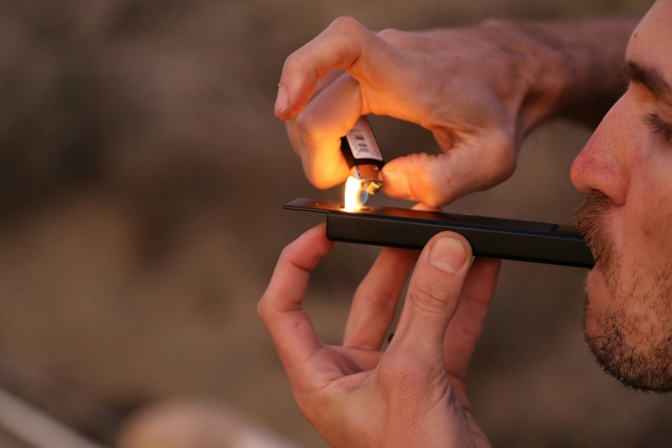
Smoke Honest
When was the first smoking pipe invented? Archaeological evidence points to around 2000 BCE, when ancient Egyptians were crafting copper pipes and placing them in tombs (literally taking their smoking gear into the afterlife).
Here’s where it gets really interesting: stone and clay pipes from the late Neolithic era might suggest that humans figured out pipe smoking way earlier than that.
In the Americas, indigenous cultures were building and using pipes for tobacco and other medicinal herbs long before European contact. Native American peoples developed incredibly sophisticated pipe designs for both sacred rituals and social smoking.
Heading over to Europe, they were smoking herbs through wooden stems and reeds around 500 BCE before they even came across tobacco.
So, technically, the first smoking pipe wasn’t invented. It evolved. But it proves that humans everywhere had the same idea: “What if we made smoking even better?”
Timeline of Weed Pipe Evolution: Era by Era
2000 BCE: Clay Pipes

Herb
Ancient Egyptian craftsmen were creating reed pipes and experimenting with copper, but the real game-changer was clay. They likely beat some of the dinky pipes made today. We’re talking about carefully crafted vessels designed for optimal airflow and heat distribution.
At the same time, Indigenous peoples of North America were also mastering clay pipe technology. They created beautiful ceremonial pieces that were as much art as they were functional tools.
The famous red pipe stone (catlinite) pipes became deeply important in spiritual practices. It was humankind’s first evidence of intentional, ritualistic smoking experiences and quality craftsmanship.
800-500 BCE: Wooden Pipes
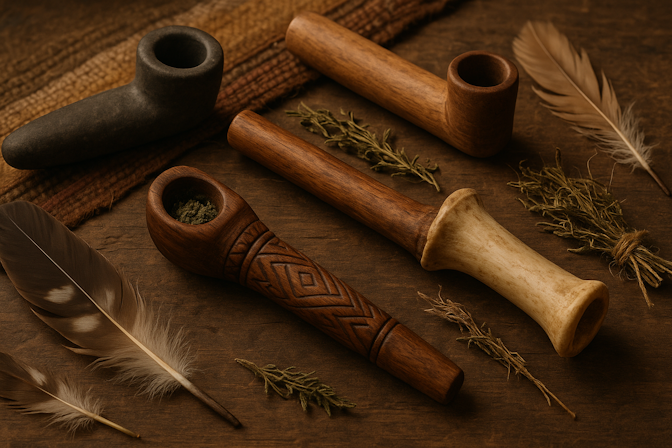
Herb
Greeks, Romans, and Celtic tribes discovered that wooden pipes had something different: flavor enhancement.
Different woods delivered different tastes, and the natural material stayed cooler during longer sessions. It’s not odd to assume that Scythian warriors were likely taking smoke breaks between battles with their own hand-carved cherry wood pieces.
But the best wooden pipes required serious skill to create. Some of them became prized possessions passed down through generations.
618-907 CE: Tang Dynasty and the Bang Pipe
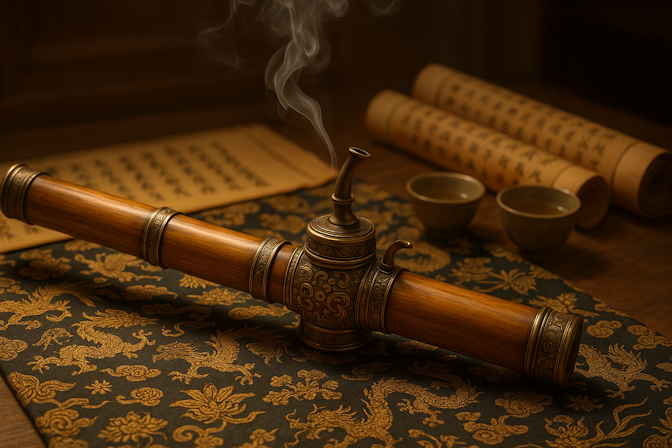
Herb
China’s Tang Dynasty gave us the “bang” pipe, made from bamboo and bronze with decorative central chambers. These pipes took smoking from necessity to luxury.
Chinese artisans set the standard for functional art that still influences pipe design today. The Tang Dynasty understood something we’re still learning: your smoking device should be as enjoyable to look at as it is to use.
1000-1320 CE: Stone and Ceramic Pipes
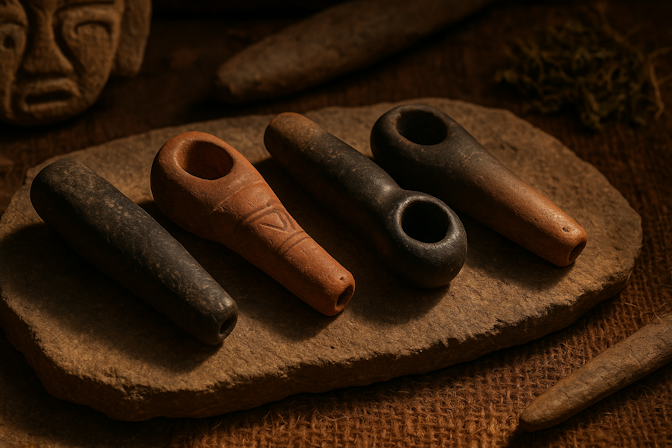
Herb
In medieval times, Ethiopian royal tribes crafted complex ceramic pieces, while Russian metalworkers experimented with some of the earliest bongs known to humanity.
Stone pipes became particularly popular because they could handle extreme temperatures without cracking, and skilled artisans could carve incredibly detailed designs that lasted centuries. Some of these medieval pieces are still intact today.
16th-17th Century: Back to Clay
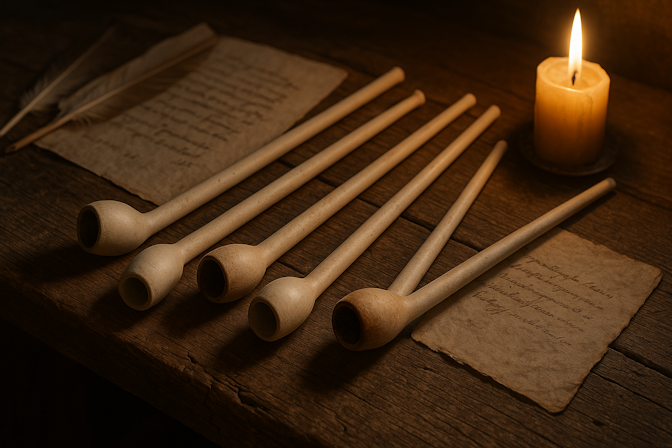
Herb
When Europeans discovered tobacco in the Americas, clay pipes exploded across Europe.
English pipe makers perfected the long “churchwarden” style that became standard in taverns and homes. They were affordable, accessible, and everywhere.
In the Netherlands, the Dutch became known for clay pipe production, creating pieces so fine they were exported across the continent. Clay was often seen as “clean” and offered a lighter taste, even heating, and could be molded into any shape.
18th-19th Century: Corn Cobs and Meerschaum

Herb
America gave the world corn cob pipes—the ultimate DIY smoking solution that actually worked incredibly well.
Across the Atlantic, European craftsmen discovered meerschaum, a mineral that carved well and smoked like a dream. Some meerschaum pipes took months to complete.
This era was all about accessibility meeting artistry. You could smoke from a simple corn cob or invest in a meerschaum masterpiece—both delivered great experiences.
1960s-1970s: Glass Weed Pipes Take Over

Herb
The counterculture revolution demanded better pipes, and glass delivered.
The first glass pipe patent was issued in 1977, but hippie glassblowers had been experimenting for years. Glass weed pipes offered something revolutionary: you could see your smoke, taste pure flavor, and clean them easily.
Glass changed everything. They were transparent art pieces that enhanced the entire smoking ritual.
1990s to Today: Glass, Silicone, and Artistry
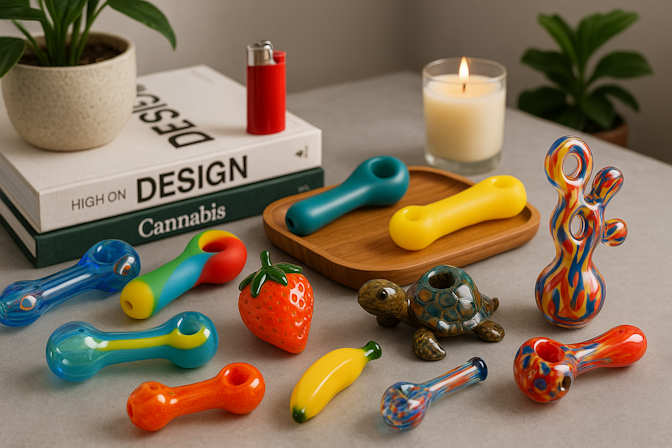
Herb
Modern glass pipe for weed technology is absolutely mind-blowing. Borosilicate glass can handle extreme temperature changes, while artists create pieces that should be in art galleries.
Silicone pipes entered the scene for people who drop things (we’ve all been there). They’re a nearly indestructible alternative that’s super easy to clean. Today’s glass artists collaborate with musicians, artists, and brands to create limited-edition pieces that sell for thousands.
Weed Pipes Are Now Collectibles

Modern weed pipes aren’t just smoking tools anymore. They are legitimate art forms.
Glassblowing masters like Bob Snodgrass are known for pioneering techniques that turned simple pipes into something spectacular. With today’s artists, you’ll see complex color-changing glass, millefiori work, and incredibly detailed designs that suit any personality.
Artist collaborations have become a huge business, with limited-edition pipes selling out in minutes. Some collectors own pieces worth more than cars. Necessary? We think so. Today’s pipes are investments.Want to try making your own piece? Check out our guide on How to Make a Glass Pipe For Smoking.
Worst Types of Weed Pipes Used Today

Elsa Olofsson
Not all types of weed pipes are created equal. Some modern options are honestly terrible choices that’ll ruin your smoking experience.
Plastic Pipes: The worst offenders. They melt, release toxic fumes, taste like chemicals, and look cheap. They’re convenient but pretty harmful and unsatisfying. The same goes for plastic grinders – avoid at all costs.
Metal Pipes: These get blazing hot, conduct heat directly to your lips, and often taste metallic. While some vintage metal pieces have charm, most modern metal pipes are pretty uncomfortable to use.
Thin Glass Pipes: These break if you look at them wrong. They shatter from minor temperature changes and are basically just expensive mistakes waiting to happen. Quality glass costs more upfront but saves money long-term.
Final Thoughts

Herb
Humanity understood one thing throughout the eras: the smoking experience matters.
Every time you pack your glass pipe for weed, you’re continuing a story that started with ancient Egyptians, was refined by Chinese artisans, perfected by Indigenous craftspeople, and elevated by modern glass artists.
That’s pretty damn cool when you think about it.
Herb Recommended Products:
READ MORE










